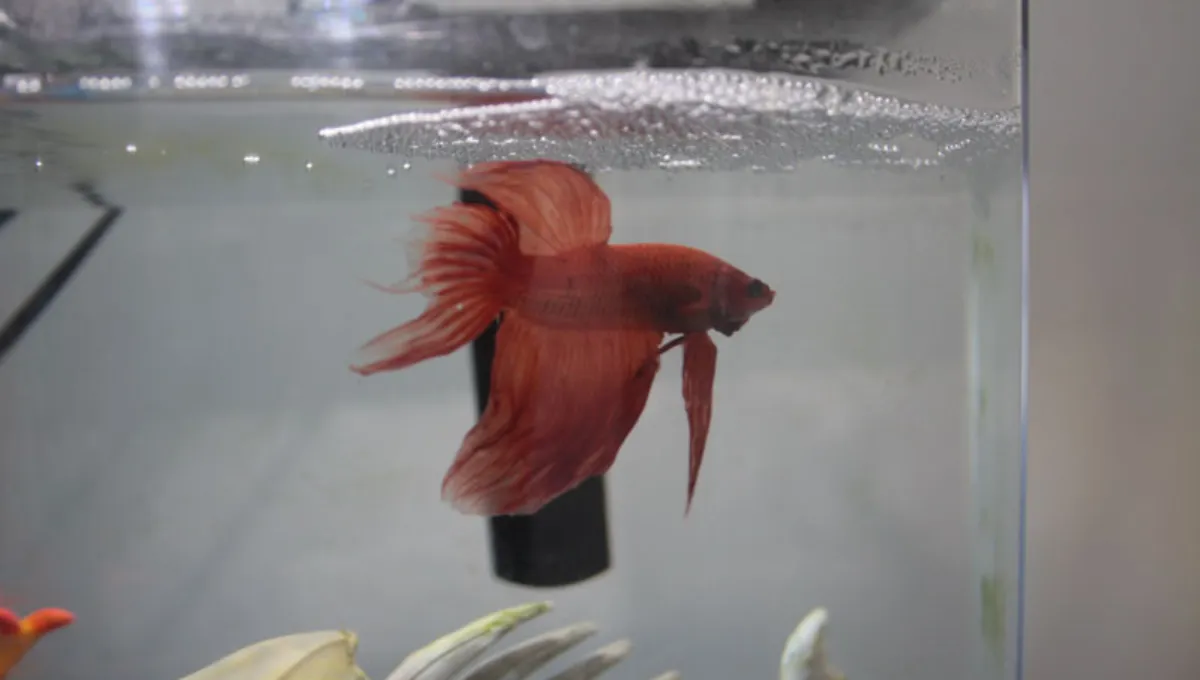

As a fishkeeper, it is crucial to recognize the signs of a dying fish and take appropriate action to address the underlying issues(How Do You Know If Your Fish Is Dying). Understanding the indicators of fish distress and potential health problems is essential for maintaining a healthy aquatic environment. This article aims to provide fishkeepers with a comprehensive guide on identifying signs of a dying fish and what steps to take to prevent further deterioration.
Presented in easy-to-understand language, this information will empower fish enthusiasts to recognize and respond to fish health issues effectively. United Fish, a leading company in the marine industry, recognizes the importance of fish welfare and is committed to providing valuable insights to help fishkeepers ensure the well-being of their aquatic pets.
Healthy and thriving fish exhibit active swimming patterns, constantly exploring their environment. On the other hand, Lethargic fish tend to hide, hover near the water surface, or stay at the bottom of the tank. Observing changes in their activity levels can indicate possible health issues.
Erratic or irregular swimming behavior, such as swimming in circles, floating on one side, or struggling to maintain balance, may indicate health problems. Regular fish exhibit smooth, controlled movements, so any unusual swimming patterns should be monitored closely.
Fish that are unwell often exhibit changes in their coloration. They may appear pale, faded, or have patches of discoloration. Additionally, changes in the texture of their scales or skin, such as lesions, sores, or sliminess, can indicate underlying health issues.
Healthy fish breathe effortlessly, with regular and rhythmic gill movement. Labored breathing, rapid gill movement, or gasping at the water’s surface are signs of respiratory distress or poor water conditions.
Inspect your fish for any visible external injuries or lesions. These can include open wounds, fin damage, or signs of physical trauma. Such wounds can lead to infections if not addressed promptly.
An abnormal swelling or bloating of the belly region can indicate various health problems, including bacterial infections or digestive issues. Conversely, a sunken or emaciated appearance may suggest malnutrition or internal organ failure.
Changes in the appearance of fins and tail, such as fraying, splitting, or clamped fins, can be signs of disease or environmental stress. Watch for any deterioration in fin quality or shape.
Good water quality is crucial for the health and well-being of fish. Regular monitoring and maintenance of water parameters are essential to ensure optimal conditions.
Use appropriate test kits to monitor key water parameters such as temperature, pH, ammonia, nitrite, and nitrate levels. Any significant deviations from the recommended ranges can negatively impact fish health.
Understanding common water quality problems, such as high ammonia or nitrite levels, pH fluctuations, or inadequate oxygenation, is essential. These issues can stress fish, weaken their immune systems, and make them more susceptible to diseases.
Excessive algae growth can deplete oxygen levels in the water and release toxins, causing stress and health problems for fish(How Do You Know If Your Fish Is Dying). Monitoring and controlling algae blooms through proper tank maintenance and lighting management is crucial.
Fungal infections can manifest as white, cotton-like growth on fish’s skin, fins, or eyes. Other symptoms may include lethargy, loss of appetite, and rapid deterioration of health(How Do You Know If Your Fish Is Dying).
Bacterial infections can result in various symptoms, including red or bloody sores, fin rot, swollen eyes, and general lethargy. Prompt treatment is necessary to prevent the spread of the infection.
Parasites such as ich, flukes, and anchor worms can cause significant distress to fish. Symptoms may include excessive scratching, flashing against tank surfaces, white spots or cysts on the skin, and inflammation.
Viral infections in fish can be challenging to identify(How Do You Know If Your Fish Is Dying), as symptoms may vary widely. However, common signs include abnormal behavior, skin discoloration, growths or tumors, and rapid weight loss.
Swim bladder disorders affect a fish’s buoyancy control, causing(How Do You Know If Your Fish Is Dying) them to float, sink, or swim erratically. Symptoms may include fish floating at the water’s surface or struggling to swim coordinatedly.
Keeping fish species together with inconsistent behavior, aggression levels, or water parameter requirements can result in stress and health issues(How Do You Know If Your Fish Is Dying). Research and choose compatible tank mates carefully.
Overcrowding a tank can lead to poor water quality, increased resource competition, and elevated stress levels among fish. Ensure that your fish have enough space to swim and establish territories.
Inadequate filtration and oxygenation can lead to a buildup of harmful(How Do You Know If Your Fish Is Dying) substances and a decrease in oxygen levels. This can compromise fish health and make them more susceptible to diseases.
A balanced and nutritious diet is crucial for fish health(How Do You Know If Your Fish Is Dying). Inadequate nutrition or improper feeding practices can weaken fish’s immune systems, leading to increased disease vulnerability.
If you suspect a fish is unwell, promptly isolate it in a separate tank or quarantine container. This prevents the potential spread of diseases(How Do You Know If Your Fish Is Dying) to other fish and allows for closer observation.
Take immediate action to address water quality issues. This may include performing water changes, adjusting temperature and pH levels, and utilizing appropriate water conditioners or treatments to neutralize toxins.
Optimize the aquarium environment by addressing any stressors, such as overcrowding, poor tank maintenance, or improper lighting. Create a comfortable and stress-free environment for your fish.
If the condition of your fish does not improve or worsen despite your efforts, consult a qualified veterinarian or aquatic specialist. They can provide a more accurate diagnosis and recommend suitable treatments.

Performing regular water changes and maintaining proper tank hygiene help prevent the accumulation of toxins and maintain water quality.
Quarantine new fish before introducing them to the main tank. This minimizes the risk of introducing diseases or parasites to the fish population.
Offer a varied diet that meets the nutritional needs of your fish species. Consider incorporating high-quality fish food and supplements to ensure optimal health.
Regularly test water parameters to ensure they remain within the recommended ranges for your fish species. Adjust conditions as necessary to maintain a stable and healthy aquatic environment.
Research their compatibility with existing tank inhabitants before adding new fish to your aquarium. Ensure they have similar behavior, dietary requirements, and water parameter preferences
Recognizing signs of a dying fish is crucial for any responsible fishkeeper. By observing fish behavior, monitoring physical indicators, maintaining ideal water quality, identifying common diseases(How Do You Know If Your Fish Is Dying), and addressing environmental stressors, fish enthusiasts can take prompt action to protect the well-being of their aquatic pets.
The immediate steps outlined in this guide, such as isolating affected fish, treating water quality issues, and seeking professional assistance when needed, can make a significant difference in saving a fish’s life(How Do You Know If Your Fish Is Dying). United Fish is dedicated to promoting fish welfare and encourages fishkeepers to prioritize preventive measures, including regular tank maintenance, quarantine procedures, balanced nutrition, and ongoing monitoring of water parameters. By implementing these practices, fishkeepers can create a thriving and healthy aquatic environment, ensuring the longevity and well-being of their beloved fish companions.

A Look at Dubai Mall’s Most Talked-About Dining Spots in 2025

A Look at Dubai Mall’s Most Talked-About Dining Spots in 2025

The Confluence of Culinary Excellence and Casino Trends in the UAE


The Benefits of Hiring a Professional Clown for Children’s Parties


Near-Expiry Pantry & Sweets in Dubai: Big Savings on Everyday Essentials

كيف يمكنني اللعب في كازينو اون لاين بأمان؟

Ford Raptor 2025 in the UAE: Pricing, Power, and Desert Ready Capability

Behind Every Online Food Order in Dubai Is a Strong IT Support

A Look at Dubai Mall’s Most Talked-About Dining Spots in 2025

A Look at Dubai Mall’s Most Talked-About Dining Spots in 2025

The Confluence of Culinary Excellence and Casino Trends in the UAE